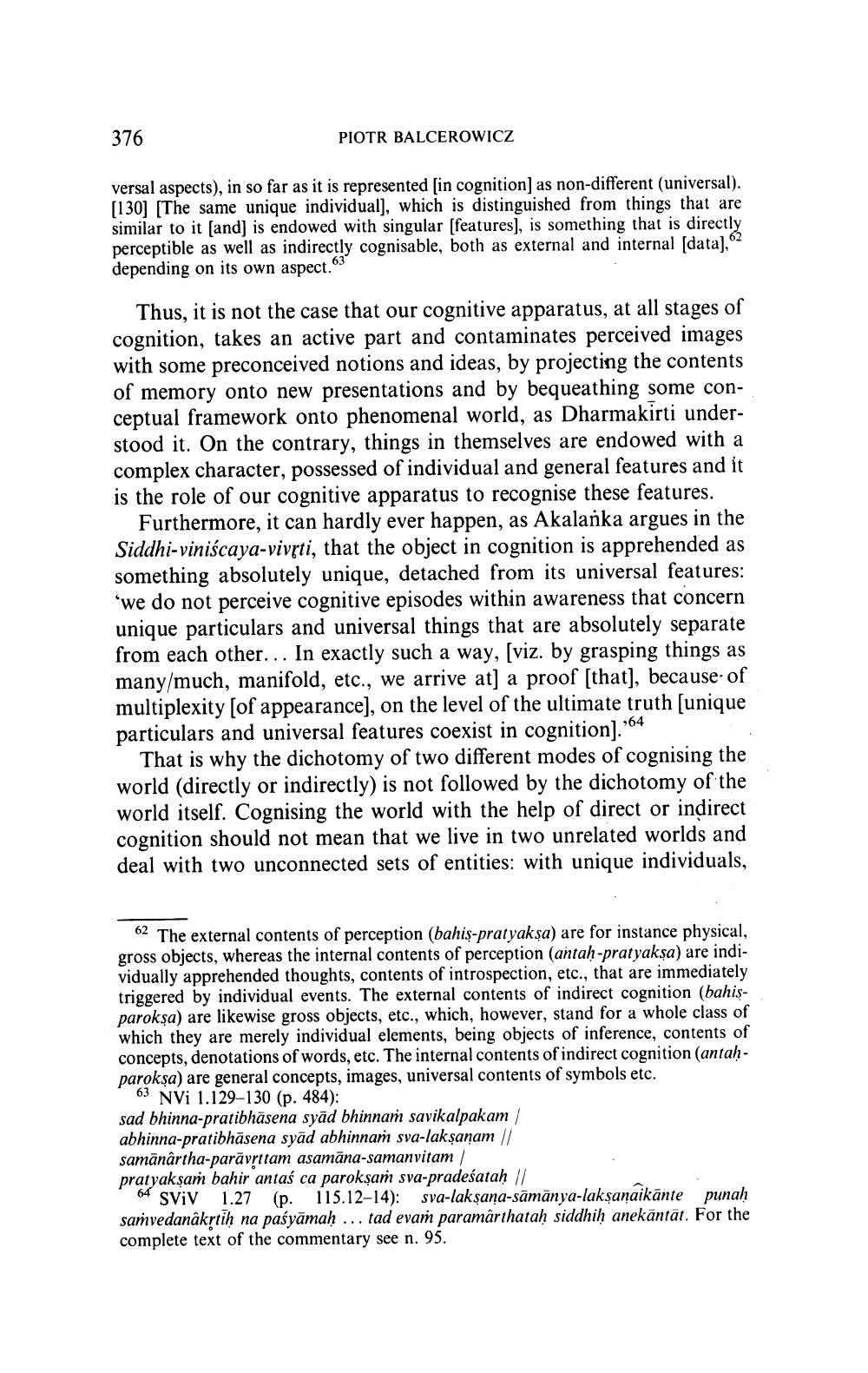________________
376
PIOTR BALCEROWICZ
versal aspects), in so far as it is represented [in cognition] as non-different (universal). [130] [The same unique individual], which is distinguished from things that are similar to it [and] is endowed with singular [features], is something that is directly perceptible as well as indirectly cognisable, both as external and internal [data], 62 depending on its own aspect."
63
Thus, it is not the case that our cognitive apparatus, at all stages of cognition, takes an active part and contaminates perceived images with some preconceived notions and ideas, by projecting the contents of memory onto new presentations and by bequeathing some conceptual framework onto phenomenal world, as Dharmakirti understood it. On the contrary, things in themselves are endowed with a complex character, possessed of individual and general features and it is the role of our cognitive apparatus to recognise these features.
Furthermore, it can hardly ever happen, as Akalanka argues in the Siddhi-viniścaya-vivrti, that the object in cognition is apprehended as something absolutely unique, detached from its universal features: 'we do not perceive cognitive episodes within awareness that concern unique particulars and universal things that are absolutely separate from each other... In exactly such a way, [viz. by grasping things as many/much, manifold, etc., we arrive at] a proof [that], because of multiplexity [of appearance], on the level of the ultimate truth [unique particulars and universal features coexist in cognition].'
964
That is why the dichotomy of two different modes of cognising the world (directly or indirectly) is not followed by the dichotomy of the world itself. Cognising the world with the help of direct or indirect cognition should not mean that we live in two unrelated worlds and deal with two unconnected sets of entities: with unique individuals,
62 The external contents of perception (bahis-pratyakṣa) are for instance physical, gross objects, whereas the internal contents of perception (antaḥ-pratyakṣa) are individually apprehended thoughts, contents of introspection, etc., that are immediately triggered by individual events. The external contents of indirect cognition (bahisparoksa) are likewise gross objects, etc., which, however, stand for a whole class of which they are merely individual elements, being objects of inference, contents of concepts, denotations of words, etc. The internal contents of indirect cognition (antaḥparoksa) are general concepts, images, universal contents of symbols etc.
63 NVi 1.129-130 (p. 484):
sad bhinna-pratibhäsena syad bhinnam savikalpakam | abhinna-pratibhäsena syad abhinnam sva-lakṣanam || samanârtha-parāvṛttam asamāna-samanvitam pratyakşam bahir antaś ca parokṣam sva-pradeśataḥ ||
64 SVIV
1.27 (p. 115.12-14): sva-lakṣana-sāmānya-lakṣanaikante punah samvedanâkṛtiḥ na paśyamaḥ... tad evam paramarthataḥ siddhiḥ anekantāt. For the complete text of the commentary see n. 95.




